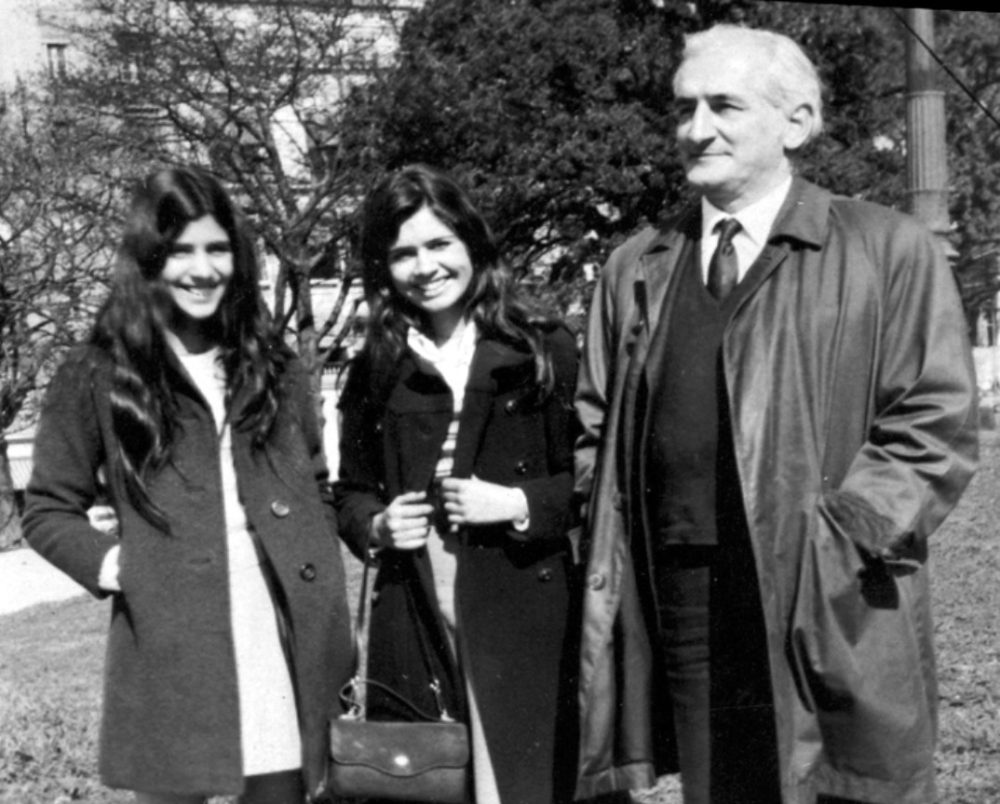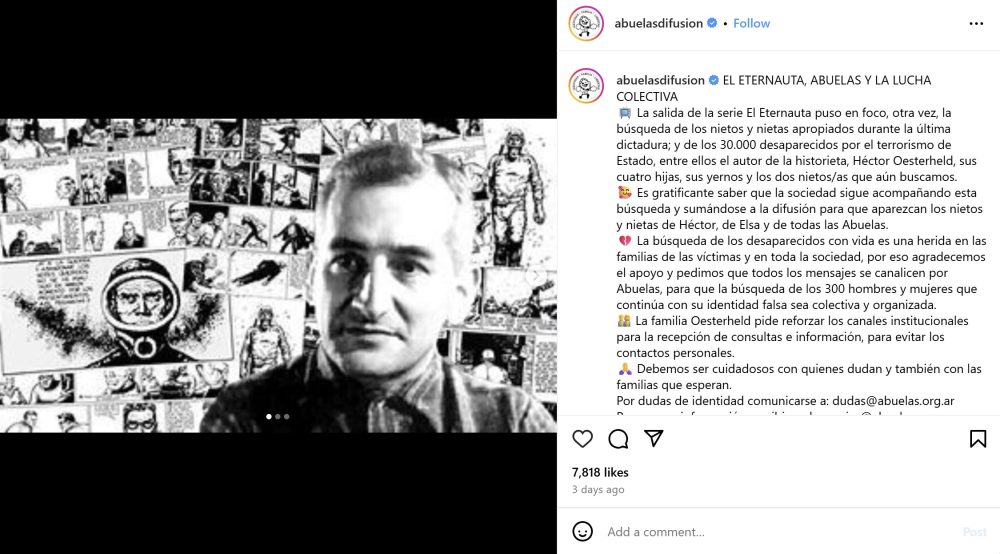The smash hit debut of The Eternaut (El Eternauta) on Netflix has not just drawn attention to the classic Argentine comic but may help answer a lingering real-world question about the whereabouts of the grandchildren of “disappeared” series co-creator Héctor Germán Oesterheld.
In the wake of the Netflix series, it has been reported that a renewed call has been issued by non-profit Abuelas de Plaza de Mayo, which seeks to reunite the stolen and forcibly adopted children of kidnapped, detained and executed political prisoners by Argentina’s 1976-83 military dictatorship. Oesterheld, his four daughters (two of whom pregnant), and four sons-in-law were all among the 30,000 “enforced disappearances” whose exact fates remain unknown to this day. During this period, pregnant political prisoners would often have their children seized at birth and adopted by military families close to the regime – with the distinct possibility that the babies may have survived. Over 500 newborns are believed to have been seized, with 139 having identified their true parentage as of January 2025.
“Following the premier of the streaming adaptation of El Eternauta, the Abuelas de Plaza de Mayo, who have spent decades searching for the stolen children, and the human rights organisation Hijos have launched a new public appeal.”
The public appeal, as reported in the Guardian,
“Did you know that two grandchildren of the creator of El Eternauta are missing and could be alive? If you were born in November 1976 or between November 1977 and January 1978 and have doubts about your identity or know someone who does, we’ll tell you who your grandmothers could be.”
Starting in the early 1970s Héctor Germán Oesterheld and his family were involved in leftist politics and active with the political organisation Juventud Peronista (today a major political party in Argentina) and later the Montoneros far-left guerrilla group. A military coup in 1976 and a hard-right military junta would target anyone associated with socialist or leftist politics – with the Oesterhelds being seized in 1976-1977.

Prior to Héctor Oesterheld’s own disappearance, in 1976 he had begun work on a sequel to the original El Eternauta (El Eternauta: segunda parte) for anthology magazine Libro de Oro Skorpio with original series artist Francisco Solano López. As Oesterheld became more involved with the Montoneros he would deliver scripts for the story clandestinely while in hiding. The series was concluded by López in 1978, a year after the writer was taken and believed to have been killed.
It appears that the public appeal may have gathered a significant response as a few days ago the Abuelas posted on their Instagram [translated by DeepL]:
“EL ETERNAUTA, GRANDMOTHERS AND THE COLLECTIVE STRUGGLE.
“The release of the series El Eternauta put in focus, once again, the search for the grandsons and granddaughters appropriated during the last dictatorship; and for the 30,000 disappeared by State terrorism, among them the author of the comic book, Héctor Oesterheld, his four daughters, his sons-in-law and the two grandchildren we are still looking for.
“It is gratifying to know that society continues to join this search and to spread the word so that the grandsons and granddaughters of Héctor, Elsa and all the grandmothers can be found.”


Oesterheld’s wife, Elsa Sánchez, was spared and two of her grandsons were returned to the family – three-year-old Martin, the son of their eldest daughter Estela; and one-year-old Fernando, the son of second-eldest Diana. Sánchez’s youngest daughter, Beatriz, was the only one whose body was released and buried in July 1976. Orphaned Martin would be raised by Sánchez and Fernando raised by his paternal grandparents. Two Oesterheld daughters – Diana and Marina – were over six months pregnant at the time of their disappearances. Sánchez would become heavily involved in the Abuelas de Plaza de Mayo movement from the 1980s, hoping to be reunited with her stolen grandchildren that may be alive up to her death in 2015.
Héctor Germán Oesterheld was a journalist, editor and renowned comics writer whose work was considered a crucial part of the Golden Age of Argentine Comics between the 1940s and 1960s. He would create or co-create a number of influential series including El Eternauta/The Eternaut (1957), with artist Francisco Solano López; Mort Cinder (1962) with Alberto Breccia; plus a number of biographies of domestic and international political figures – including Che Guevara (1968) with Alberto Breccia and Enrique Breccia, which was immediately banned. Oesterheld also collaborated with young Italian maestro Hugo Pratt on war comics Sergeant Kirk (1953) and Ernie Pike (1957). Before initiating the sequel (his final work), in 1969 Oesterheld worked with Alberto Breccia on a more overtly politicised reboot of El Eternauta which was cancelled by the publisher after public backlash.
